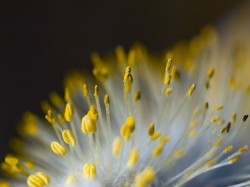We read recently that the pollen levels for this spring are expected to be among the highest in recent year. This is a result of decades of increasing pollen counts nationwide over the past 25 years. The heavy precipitation this past winter only exacerbated the problem. This explains why some of you who have never had allergies, now are experiencing dry, itchy, watery eyes; sneezing; and difficulty breathing. Not fun, we know.
Here’s how to handle your allergies
- Move outdoor activities to the afternoon – Pollen counts are usually highest from 5am-10am.
- Wear a mask while gardening or mowing.
- Run your errands on rainy days or after it rains – Moisture helps clear pollen from the air.
- Launder clothing after being outside – Toss your clothes in the hamper and shower to rinse pollen from your skin and hair once you’re in for the day/evening.
- Dry laundry indoors – Hanging your clothing to dry is more eco-friendly but if you suffer from allergies, pollen will cling to your clothes sheets and towels if you dry them outside.
- Use high-efficiency filters in your heating and cooling systems – They can help keep indoor air cleaner by trapping pollen and other allergens.
- Treat symptoms early – Most medications work best if taken before pollen hits the air. Ask your doctor when you should start treatment.
- Shut the windows – Fresh air is great but if you suffer from allergies, keep car and home windows closed to keep the pollen out.
- Before heading outside, check the local news or visit the American Academy of Allergy, Asthma, and Immunology’s National Allergy Bureau for up-to-date readings.
- Brush up on our blog post, 6 Ways to Reduce Dust & Allergy Symptoms in Your Home for more detailed info on how (and how often) to clean your household items.
Are you experiencing more allergy symptoms this year? What are you doing to handle them so far?
– S.O.




